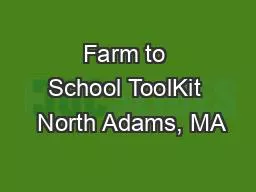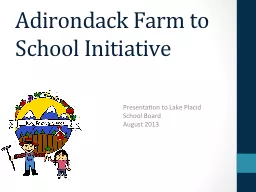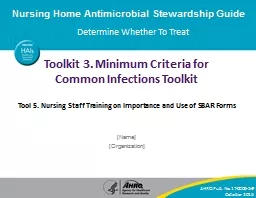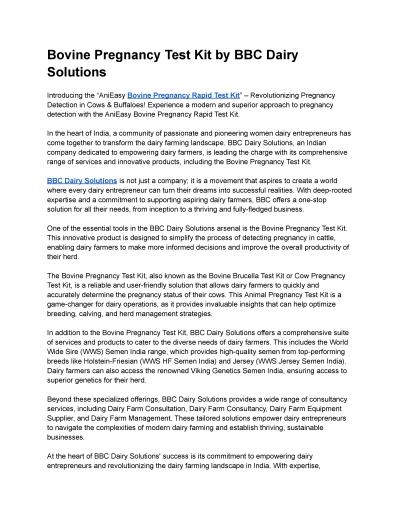PPT-Farm to School ToolKit North Adams, MA
Author : provingintel | Published Date : 2020-06-22
By Ang Sherpa Marcos Soto and Carmen Saab 1 Table of Contents 3 Introduction 4 Procurement Laws 512 Farmer Interviews 1315 Additional Interviews 1617 School
Presentation Embed Code
Download Presentation
Download Presentation The PPT/PDF document "Farm to School ToolKit North Adams, MA" is the property of its rightful owner. Permission is granted to download and print the materials on this website for personal, non-commercial use only, and to display it on your personal computer provided you do not modify the materials and that you retain all copyright notices contained in the materials. By downloading content from our website, you accept the terms of this agreement.
Farm to School ToolKit North Adams, MA: Transcript
Download Rules Of Document
"Farm to School ToolKit North Adams, MA"The content belongs to its owner. You may download and print it for personal use, without modification, and keep all copyright notices. By downloading, you agree to these terms.
Related Documents














